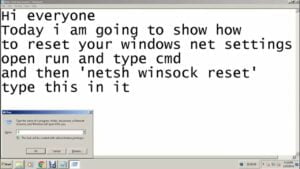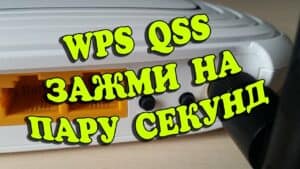Cmd and PowerShell are two different Windows command line shells, each serving unique purposes and use cases. It is important for IT professionals to understand the difference between these tools to improve operational efficiency and system security.
Cmd, or command prompt, has long been an integral part of Windows. It functions as a command interpreter, allowing users to perform basic operations. For example, the "cd" command is used to change to a directory. Cmd commands are relatively simple and help perform tasks such as navigating the file system or running applications and scripts.
PowerShell, in turn, is a more complex and powerful tool. The developers created it as a universal shell for system and network automation. PowerShell uses cmdlets — special commands that allow you to manage system objects, configuration, and services. The Set-Location cmdlet takes the user to the desired directory, which resembles the cd command in cmd, but provides more opportunities for automation and management.
History and origin
Command Prompt (cmd) and PowerShell, created in different eras and for different purposes, play significant roles in managing Windows operating systems.
- CMD was developed in the 1980s as a command interpreter for the MS-DOS family of operating systems. It provided basic capabilities for managing files and system processes.
- PowerShell appeared in 2006. This is an instrumental shell and scripting language created for administering systems and automating tasks in modern IT infrastructures.
Command structure and syntax
Cmd uses simplified commands and syntax, making it convenient for performing basic file operations. The Cmd command interface recognizes keywords and variables, limiting functionality.
PowerShell is designed for administrators with specific automation needs. PowerShell's architecture is based on object-oriented programming concepts. PowerShell commands are called cmdlets and support complex data structures. For example, to get a list of processes, you can use the cmdlet Get-Process, which returns process objects, making it easier to filter and manipulate data.
Features and functionality
Cmd provides a basic interface for executing text commands and automating tasks using scripts and batch files. Its functionality is limited to file system operations, application launching, and simple network functions.
PowerShell supports object-oriented designs and integration with the .NET Framework. This gives users the ability to interact not only with the file system, but also with Windows processes, services, and the registry.
- Support for the .NET Framework allows PowerShell to perform complex automation and management tasks without additional scripting languages.
- PowerShell uses cmdlets, which are compact commands with powerful functionality.
- PowerShell offers the ability to work with a variety of data types, providing tools for processing and transforming information.
- Extensibility through modules allows you to add new functions and commands.
Error handling and debugging
- Error processing: CMD offers limited error handling capabilities. PowerShell has a built-in error handling system based on try/catch/finally.
- Debugging: CMD does not provide built-in tools for debugging scripts. PowerShell has integrated debugging tools that let you set breakpoints, step through code, and inspect variables.
- Error output: CMD is limited to text error output to stderr. PowerShell provides structured error output.
- Logging: CMD does not have built-in mechanisms for logging events and errors. PowerShell is integrated with Windows Event Logging and makes logging easy to set up and use.
Script and automation support
Cmd is used to execute text commands and simple scripts. PowerShell extends the capabilities of CMD through the presence of object-oriented constructs and modules.
- Command language: Cmd uses simple commands, while PowerShell is based on a complex scripting language.
- Working with objects: PowerShell allows you to manipulate objects, making it easy to automate complex tasks.
- Modular architecture: PowerShell supports modules and third-party libraries, which expands its functionality.
- Integration with systems: PowerShell integrates with Active Directory, Azure, SQL Server, and other services, making it an invaluable tool for administrators and developers.
Compatibility and cross-platform
Cmd provides limited compatibility within Windows and inherits functionality from DOS. It runs exclusively on Windows, which makes it limited in terms of cross-platform functionality.
PowerShell is based on the .NET Framework and .NET Core in a cross-platform version of PowerShell Core, allowing it to run on a variety of operating systems, including Linux and macOS.
- Compatibility: CMD provides minimal compatibility within the Windows ecosystem. PowerShell provides broad compatibility through .NET integration.
- Cross-platform: CMD functions exclusively on Windows. PowerShell supports running on Windows, Linux and macOS.
- Functionality: CMD provides basic functionality for executing commands. PowerShell offers advanced automation and management features.
- Application scenarios: CMD is suitable for simple tasks within a single operating system, while PowerShell is suitable for complex scripts and cross-platform automation tasks.
Interface and user experience
The user experience between cmd and PowerShell differs in several key aspects:
- Intuitiveness and functionality: Cmd provides basic command line capabilities with a minimalistic interface. PowerShell offers advanced management and automation capabilities, built-in support for scripting languages, and a flexible cmdlet system.
- Scripting support and automation: In cmd, the ability to create scripts is limited. PowerShell supports language constructs such as loops and conditions.
- Compatibility with system modules and services: Cmd is limited to basic system functions, while PowerShell provides access to a wide range of Windows modules and services.
- Interface and ease of use: In cmd the interface is minimal. PowerShell comes with a graphical editor called ISE, which improves code readability and debugging.
Key differences between CMD and PowerShell
| Aspect | CMD (Command Prompt) | PowerShell |
|---|---|---|
| Purpose | Processing and executing simple commands | Advanced task management and automation |
| Command language | Text command language similar to MS-DOS | Object-oriented programming language |
| Processing objects | Works with text and strings | Works with .NET objects |
| Scripts | .bat or .cmd files | .ps1 files |
| Integration with systems | Limited Windows integration | Deep Windows integration and .NET support |
| Power and flexibility | Less powerful and limited in capabilities | More powerful and flexible tool |
| Help and help | Limited reference information | Extensive built-in help system and help (Get-Help) |
In conclusion, cmd and PowerShell are tools with different levels of functionality and compatibility. Cmd remains useful for simple scripts and tasks that require minimal effort. PowerShell provides powerful scripting and automation capabilities, making it the preferred choice for IT professionals.
Sources:
- PowerShell vs CMD: What Is the Difference - MSP360
- Windows PowerShell vs CMD: What's the Difference?
- PowerShell vs Cmd - Super User







